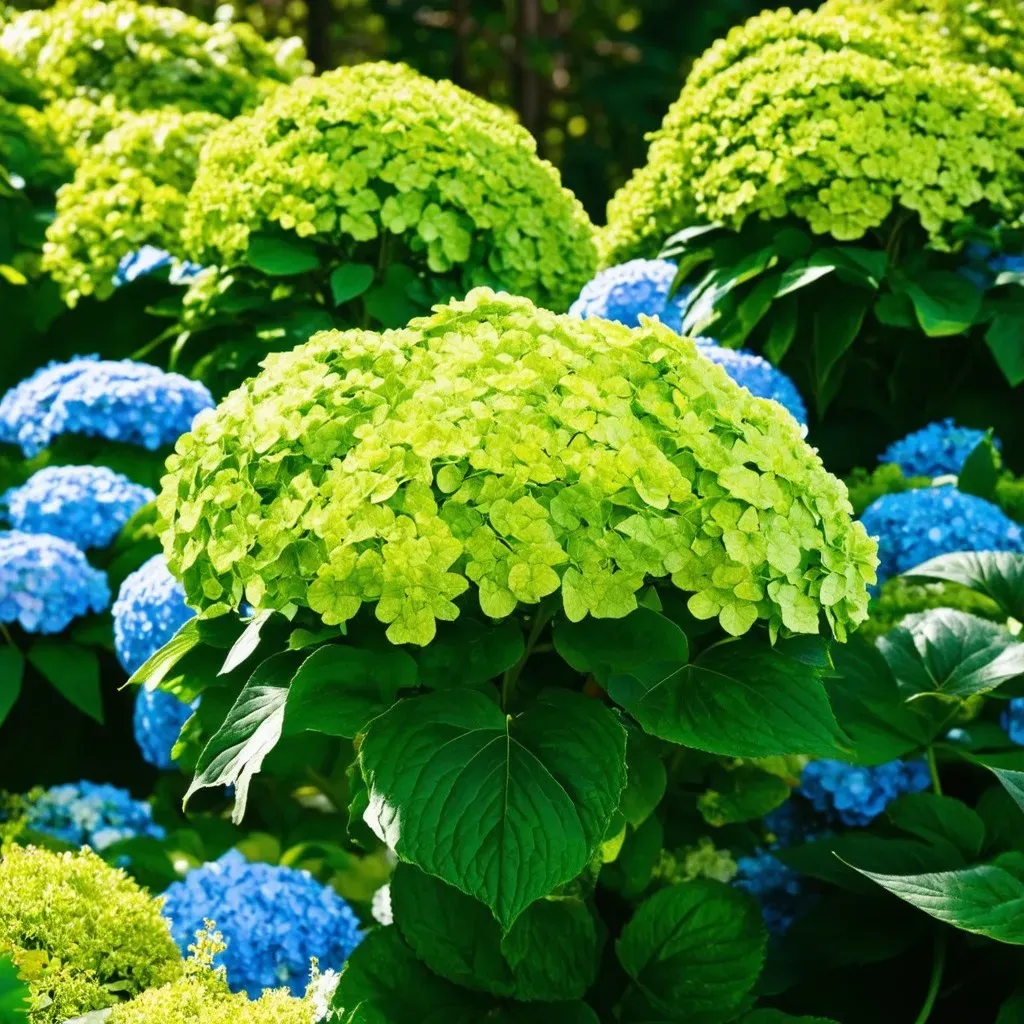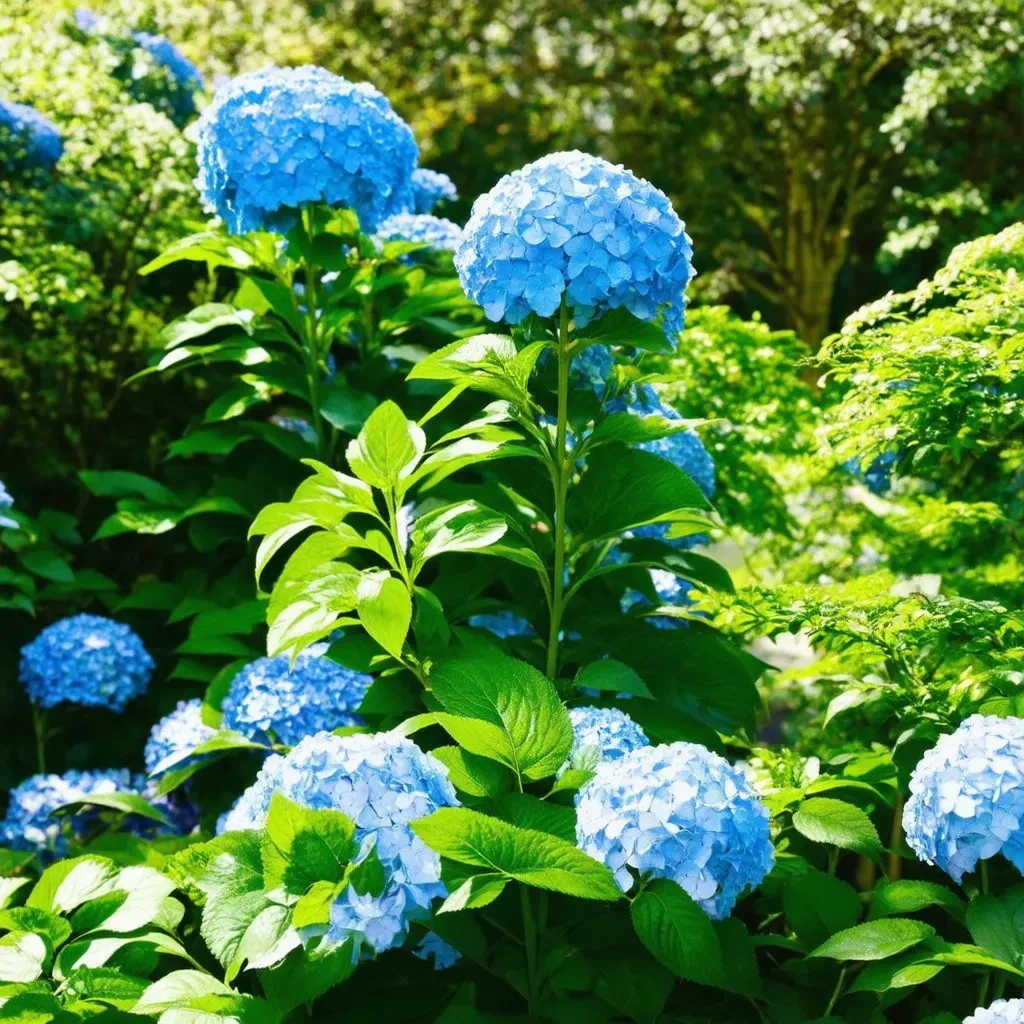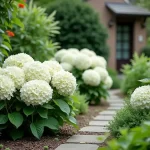Green hydrangea plants are a fascinating addition to any garden, characterized by their lush foliage and vibrant blossoms that can range from green to various shades of blue. The interplay of these colors creates a visually captivating environment, making hydrangeas a popular choice for gardeners and landscape architects alike. The ability of hydrangeas to change color based on soil pH adds a unique twist to their cultivation, with green and blue hydrangeas being particularly desirable.
Understanding the Color Change
Hydrangeas are renowned for their ability to change color depending on the acidity of the soil. Specifically, blue hydrangeas thrive in acidic conditions (pH below 5.5), while alkaline soils (pH above 6.5) tend to produce pink blooms. Hence, the transformation from blue to green can signify various stages of bloom or the natural aging process of the flowers.
Key Facts About Green and Blue Hydrangeas
| Aspect | green hydrangeas | Blue Hydrangeas |
|---|---|---|
| Soil pH | Neutral to slightly acidic | Acidic (pH < 5.5) |
| Bloom Time | Summer to Fall | Late Spring to Early Fall |
| Plant Size | Varies (3-6 feet) | Varies (3-7 feet) |
| Maintenance Level | Moderate | Moderate to High |
| Changing Colors | Fades to green naturally | Can turn pink in alkaline soil |
| Popular Varieties | ‘Lime Rickey’, ‘Key Lime’ | ‘Endless Summer’, ‘Penny Mac’ |
Popular Varieties of Green and Blue Hydrangeas
Green Hydrangea Varieties
- Lime Rickey: Known for large, disc-shaped flowers, they start as light green and transition to deeper shades as they age.
- Key Lime: Produces vibrant green blooms that can brighten any garden space, valued for their unique colors and size.
Blue Hydrangea Varieties
- Endless Summer: A versatile cultivar that produces endless blue blooms throughout the season.
- Penny Mac: A hardy variety that requires minimal maintenance and can grow impressively large while showcasing beautiful blue flowers.

Factors Influencing Hydrangea Color
- Soil pH: The most significant factor in hydrangea coloration is the soil’s acidity. Regular testing can help maintain the desired pH level for optimal blooming.
- Nutrient Levels: Hydrangeas require specific nutrients (like aluminum) to produce blue flowers. Gardens may benefit from fertilizers formulated for acid-loving plants.
- Water Quality: Tap water in hard water areas may contain alkaline minerals, hindering the blue pigmentation. Rainwater or filtered water is recommended for these regions.
- Sunlight Exposure: Hydrangeas perform best in partial shade; too much sunlight can lead to burnt leaves and hinder blooming.
Tips for Growing Green and Blue Hydrangeas
- Soil Preparation: Test the soil pH before planting. Amend with sulfur to lower pH for blues, or lime to raise it for pinks.
- Watering Techniques: Ensure consistent moisture, especially during flowering to promote healthy blooms. Diseased plants may require adjusted watering schedules.
- Fertilization: Fertilize with low phosphorus options to avoid impediments to aluminum absorption, which is crucial for blue blooms. A well-balanced fertilizer is typically recommended.
- Pruning: Proper pruning can encourage better air circulation and flower production. Prune at the right time according to the type of hydrangea.
Common Questions About Green and Blue Hydrangeas
Why do my blue hydrangeas turn green?
As hydrangeas age, older blooms may lose color intensity and appear greener. This natural process can be influenced by soil conditions and nutrient availability.
How can I change my hydrangea’s color?
Manipulating soil pH through amendments like sulfur (to increase acidity for blue) or lime (to increase alkalinity for pink) is the primary method to influence bloom colors.
Are green hydrangeas less vibrant than blue hydrangeas?
Green hydrangeas are not necessarily less beautiful; they offer a unique charm and elegance that complements blue varieties exceptionally well.
What are the best soil conditions for blue hydrangeas?
Blue hydrangeas prefer acidic soil (pH 5.5 or lower), rich in organic matter. Regular soil testing is essential for maintaining optimal conditions.

Practical Considerations for Gardeners
Utilizing local soil testing services or home testing kits can provide accurate readings for pH levels, allowing for better gardening decisions. Moreover, establishing a layering strategy by combining hydrangeas with Other plants can create a stunning visual effect and encourage biodiversity in your garden.
Common Pests and Diseases
Green and blue hydrangeas may face challenges from common pests like aphids, spider mites, and fungal diseases such as powdery mildew. Monitoring plants regularly and employing organic pesticides or fungicides can help maintain plant health.
Conclusion on Hydrangeas’ Beauty
By understanding the complexities surrounding green and blue hydrangeas, gardeners can craft stunning landscapes that impress with their vibrancy and elegance. With appropriate care, these plants can become the centerpiece of any garden, showcasing seasonal transformations and captivating colors.
For further information on caring for your hydrangeas, check out credible gardening resources like Epic Gardening and Gardening Know How.



